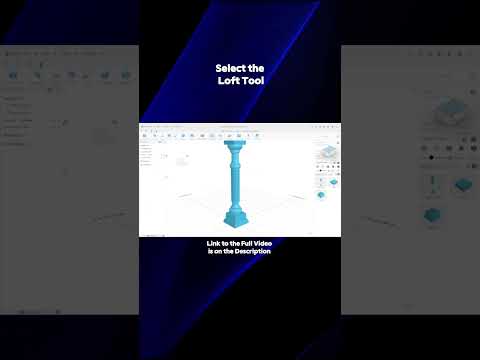Your Cart is Empty
Customer Testimonials
-
"Great customer service. The folks at Novedge were super helpful in navigating a somewhat complicated order including software upgrades and serial numbers in various stages of inactivity. They were friendly and helpful throughout the process.."
Ruben Ruckmark
"Quick & very helpful. We have been using Novedge for years and are very happy with their quick service when we need to make a purchase and excellent support resolving any issues."
Will Woodson
"Scott is the best. He reminds me about subscriptions dates, guides me in the correct direction for updates. He always responds promptly to me. He is literally the reason I continue to work with Novedge and will do so in the future."
Edward Mchugh
"Calvin Lok is “the man”. After my purchase of Sketchup 2021, he called me and provided step-by-step instructions to ease me through difficulties I was having with the setup of my new software."
Mike Borzage
Cinema 4D Tip: Mastering the Spherical Camera for Immersive 360° Renders in Cinema 4D
January 03, 2025 3 min read

The Spherical Camera in Cinema 4D is an invaluable feature for artists aiming to deliver immersive 360° renders, suitable for virtual reality (VR), augmented reality (AR), and panoramic videos. Mastering this tool allows you to create experiences where viewers can look in any direction, fully engaging with your digital environments.
Setting Up the Spherical Camera
- Insert a New Camera: Navigate to Create > Camera > Camera to add a camera to your scene.
- Activate Spherical Projection: With the camera selected, go to the Attributes Manager, and under the Object tab, set the Projection type to Spherical. This enables the camera to capture the entire environment around it.
Designing for 360° Environments
- Full Scene Development: Ensure your scene is designed in all directions. Unlike traditional scenes focused on a single viewpoint, 360° renders require attention to detail in every angle.
- Foreground and Background Elements: Place objects at varying distances from the camera to enhance depth perception and realism.
- Avoid Clutter: While it's important to fill the space, avoid overcrowding, which can overwhelm the viewer.
Lighting Techniques
- Utilize Global Illumination: Activate global illumination in your render settings to achieve natural and realistic lighting throughout the scene.
- HDRI Environments: Apply High Dynamic Range Images (HDRI) as your environment map to provide accurate lighting and reflections.
- Consistent Lighting: Ensure light sources are balanced to prevent overexposure or underexposure in different parts of the scene.
Optimizing Camera Parameters
- Seamless Integration: The Spherical Camera automatically handles stitching of the 360° image, but ensure there are no objects too close to the camera that may cause distortion.
- Avoid Parallax Errors: Keep significant scene elements at a reasonable distance from the camera to minimize parallax issues that can occur in 360° renders.
- Camera Rotation: Since the camera captures all directions, rotation settings are less critical, but positioning remains important.
Render Settings Configuration
-
High Resolution Outputs: Because 360° images are spread over a large sphere, higher resolutions are necessary to maintain image quality. Consider using:
- For still images: 6000 x 3000 pixels or higher.
- For video: 4096 x 2048 pixels or 7680 x 3840 pixels for 8K content.
- Anti-Aliasing Settings: Set anti-aliasing to a high level to reduce jagged edges and improve overall clarity.
- Format and Encoding: Choose appropriate file formats that support high resolutions and are compatible with your target platforms, such as MP4 for videos or JPEG/PNG for images.
Testing and Troubleshooting
- Iterative Testing: Regularly render previews at lower resolutions to identify and fix issues early in the process.
- Use 360° Viewers: Test your renders in dedicated 360° viewing software or VR devices to experience the scene from the user's perspective.
- Check for Artifacts: Look out for seams, distortion, or mismatches in lighting that could disrupt the immersive experience.
Enhancing the Experience
- Spatial Audio: Consider integrating spatial audio in post-production to complement the visual immersion.
- Interactive Elements: For interactive applications, design hotspots or triggers within the environment to engage users further.
- Animation and Motion: Incorporate animated elements to bring life to your scene, but be cautious with camera movements that can cause viewer discomfort in VR.
Finalizing and Exporting
- Color Grading: Perform color corrections and grading to enhance mood and continuity across the scene.
- Compression Settings: Optimize compression to balance file size and quality, ensuring smooth playback on various devices.
- Platform Specifications: Tailor your final output to meet the requirements of platforms like YouTube 360°, Facebook 360°, or specific VR applications.
By carefully considering each aspect of the spherical rendering process, you can produce compelling 360° content that stands out in today's immersive media landscape.
For further expertise and to access the latest tools in 3D rendering, explore the offerings at NOVEDGE, the premier destination for cutting-edge design software and resources.
You can find all the Cinema 4D products on the NOVEDGE web site at this page.
Also in Design News

💎 Rhino Artisan Arrives in Turkey: Revolutionizing Jewelry Design
February 27, 2025 1 min read
Read More
ZBrush Tip: Mastering Curve Surface for Unique Textures in ZBrush
February 27, 2025 2 min read
Read MoreSubscribe
Sign up to get the latest on sales, new releases and more …



